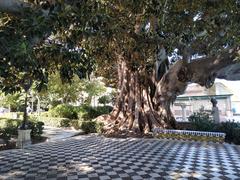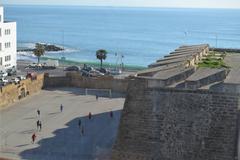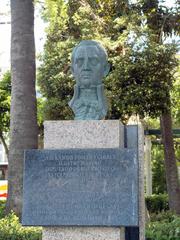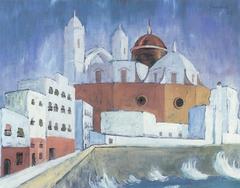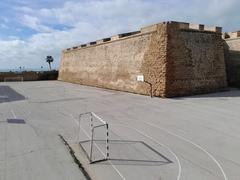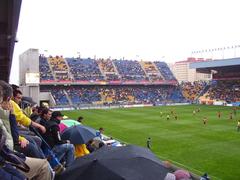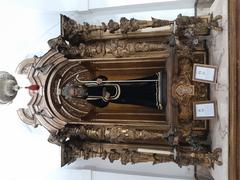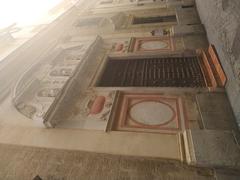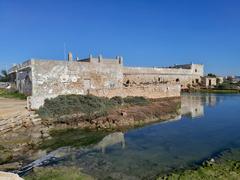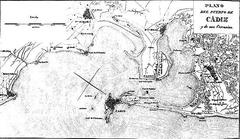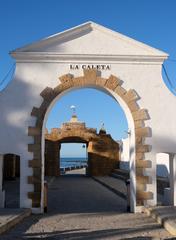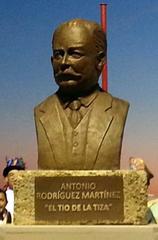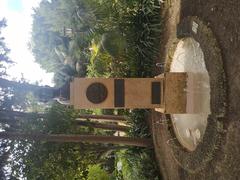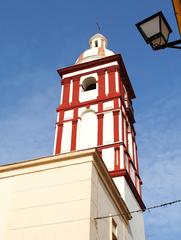Capilla de Nuestra Señora de la Palma, Cádiz, Spain: Visiting Hours, Tickets, and Historical Significance
Date: 14/06/2025
Introduction
Nestled in the vibrant Barrio de la Viña, the Capilla de Nuestra Señora de la Palma is one of Cádiz’s most significant religious and historical sites. This cherished chapel blends centuries of Andalusian Baroque artistry with deep Marian devotion, offering a window into the city’s spiritual life, architectural evolution, and resilient community spirit. Visitors are drawn not only by its historical legacy but also by its ongoing role as a cultural and religious hub within Cádiz.
This guide presents a detailed overview of the chapel’s origins, architectural highlights, visiting information, annual celebrations, and practical travel tips, helping you plan an enriching visit to one of Cádiz’s most beloved landmarks (Guía de Cádiz, Turismo Cádiz).
Table of Contents
- Early Origins and Capuchin Influence
- The 1755 Tsunami and the Miracle of La Palma
- Architectural Development in the 18th Century
- The Archicofradía de la Palma: Brotherhood and Social Role
- Artistic Heritage and Iconography
- The Church During the Peninsular War
- Restoration and Modern Developments
- Visiting Hours, Tickets, and Accessibility
- Nearby Attractions and Travel Tips
- Annual Celebrations and Community Significance
- Frequently Asked Questions (FAQ)
- Visuals and Media
- Conclusion
- References
Early Origins and Capuchin Influence
The Capilla de Nuestra Señora de la Palma traces its roots to the late 17th century through the efforts of the Capuchin order and notable local figures. In 1691, Fray Pablo de Cádiz established the Compañía Espiritual de Ave María y Coro del Santísimo Rosario, bringing together residents for prayer and devotion. Thanks to a land donation from María Peñalba, the Malavá vineyard was transformed into a dedicated chapel, completed in 1699, marking the foundation of the current church (Guía de Cádiz, Turismo Cádiz).
The 1755 Tsunami and the Miracle of La Palma
On November 1, 1755, the Lisbon earthquake and ensuing tsunami threatened Cádiz. Local tradition holds that the faithful processed with the image of the Virgen de la Palma to the shore, where the waters miraculously receded, sparing the Barrio de la Viña. This event is commemorated each year and remains central to the chapel’s identity (Cadiz Cofrade).
Architectural Development in the 18th Century
The chapel embodies the Baroque style with a unique circular floor plan, rare among Andalusian churches. Its façade on Calle de la Palma is marked by Tuscan pilasters and an 18th-century Sevillian tile-covered spire. Inside, the neoclassical altarpiece by Antonio Abazzini (1855) and an array of devotional art reflect Cádiz’s evolving artistic and spiritual traditions (Guía de Cádiz, Semana Santa Cádiz).
The Archicofradía de la Palma: Brotherhood and Social Role
The chapel is the canonical seat of the venerable Archicofradía de la Palma, established in 1691. This brotherhood, elevated to Archicofradía status in 1755, conducts processions, charitable acts, and maintains enduring traditions surrounding the Virgen de la Palma. It has absorbed other confraternities over the centuries, cementing its influence in Cádiz’s religious and social life (Archicofradía de la Palma, Cadiz Cofrade).
Artistic Heritage and Iconography
The church houses several revered images:
- Nuestra Señora de la Palma Coronada: Attributed to the Genoese school, this 18th-century image remains the focal point of local devotion and was canonically crowned in 1987 (Consejo de Cofradías Cádiz).
- Santísimo Cristo de la Misericordia: The current crucifix features a head from the original Genoese image and a new body crafted by Francisco Buiza in 1969.
- Virgen de las Penas: Possibly by Fernando Ortiz, later restored by Francisco Buiza and Álvarez Duarte, adorned with a silver-gilt crown.
Exquisite processional floats, embroidered mantles, and silverwork by renowned Andalusian artisans further enrich the chapel’s artistic ensemble (Cadiz Cofrade).
The Church During the Peninsular War
During the Peninsular War and the Siege of Cádiz, the area surrounding the old cathedral was bombarded. The cathedral chapter temporarily relocated to the Capuchin Convent, reinforcing the Capilla de la Palma’s significance as a spiritual and communal refuge (Consejo de Cofradías Cádiz).
Restoration and Modern Developments
Conservation efforts have preserved the chapel’s architecture and art. Notable restorations include the 1991 restoration of the main image by Luis González Rey and ongoing care of its processional artifacts. The chapel remains a focal point for religious and community activities in Cádiz (Cadiz Cofrade, Archicofradía de la Palma).
Visiting Hours, Tickets, and Accessibility
- Hours: Monday to Saturday, 10:00 AM–1:30 PM and 5:00 PM–8:00 PM. Sunday and holiday hours may vary due to services.
- Tickets: Admission is free; donations are welcome.
- Accessibility: The entrance is at street level and accessible for visitors with reduced mobility. Assistance can be requested from chapel staff or Archicofradía members.
For current details and any seasonal changes, check the official parish website.
Nearby Attractions and Travel Tips
Located in the La Viña district, the chapel is close to:
- Playa de La Caleta: Cádiz’s iconic beach
- Cádiz Cathedral: The city’s grandest religious structure
- Torre Tavira: With its camera obscura and panoramic city views
- Museo de Cádiz: Home to archaeological and art collections
The area is renowned for its tapas bars and seafood restaurants. Comfortable footwear is advised due to cobbled streets.
Annual Celebrations and Community Significance
The most significant event is the November 1st procession commemorating the 1755 miracle. Other annual observances include the Solemn Quinario to Cristo de la Misericordia during Lent, the September Triduo for the Nativity of Mary, and the Novena leading up to November festivities. These events draw large crowds and affirm the chapel’s role at the heart of Cádiz’s religious life (Semana Santa Cádiz).
Frequently Asked Questions (FAQ)
Q: What are the visiting hours?
A: Monday to Saturday, 10:00 AM–1:30 PM and 5:00 PM–8:00 PM; hours may vary on Sundays and holidays.
Q: Is there an admission fee?
A: No; entry is free, but donations are encouraged.
Q: Is the chapel accessible?
A: Yes, the entrance is at street level and accessible for most visitors.
Q: Are guided tours available?
A: Guided tours can be arranged through local tourist offices or the Archicofradía.
Q: What is the significance of the November 1st procession?
A: It commemorates the 1755 miracle when the Virgen de la Palma was believed to have protected Cádiz from the tsunami.
Visuals and Media
High-quality images and virtual tours are available via official Cádiz tourism sites and the Archicofradía’s platform. These resources provide detailed visual context for planning your visit.
Conclusion
The Capilla de Nuestra Señora de la Palma stands as a living testament to Cádiz’s enduring faith, artistic achievement, and communal resilience. Its unique Baroque architecture, historic icons, and vibrant celebrations make it a must-visit site for travelers seeking to understand the heart of Cádiz. Plan your visit around its service schedule, explore nearby attractions, and immerse yourself in the traditions that have shaped this remarkable chapel.
Stay updated on events and heritage insights by visiting official resources and local tourism platforms. Enhance your experience with the Audiala app for exclusive tours and cultural content.
References
- Guía de Cádiz
- Turismo Cádiz
- Cadiz Cofrade
- Archicofradía de la Palma
- Semana Santa Cádiz
- Consejo de Cofradías Cádiz
- Official Parish Website
